The magical beauty of the rainbow
A rainbow is a dispersion of sunlight when refracted and reflected through raindrops. Here are beautiful photos of rainbows in some parts of the world.
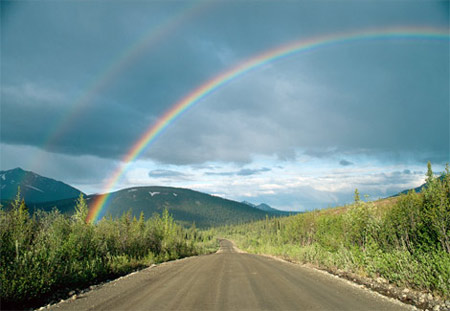
The rainbow crosses the Denali highway (1,100 km long) in the state of Alaska, USA. People divide the rainbow by level 1,2,3 . based on the number of reflections. Rainbow level 1 only reflects once, so it has the strongest brightness.
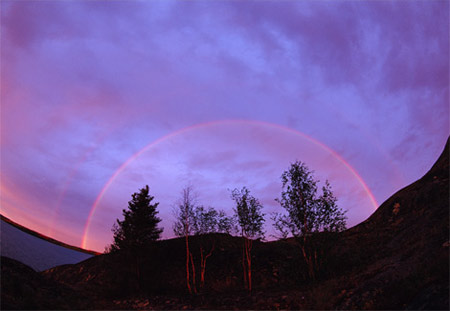
Many layers of rainbow above one area in Canada. The droplets are tiny in the refracted (bent) air of white light, separating it into colors: red, orange, yellow, green, blue and purple.
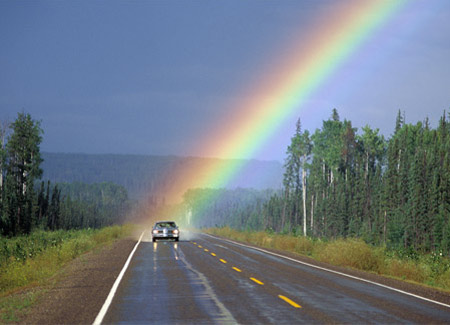
The end of a rainbow highlights a car in the north of the United States. Since the rainbow is just an illusion, it has no real end. Instead, the position of the rainbow continues to shift according to our perspective.
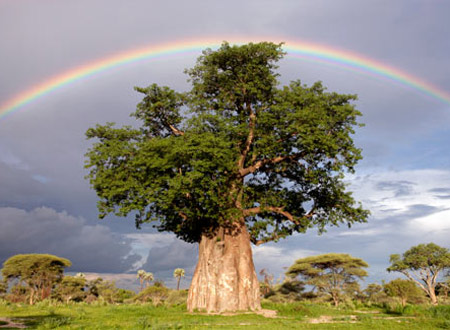
A rainbow above the Moremi Game reserve in Botswana's Okavango delta. In the center of the picture is a large baobab tree.
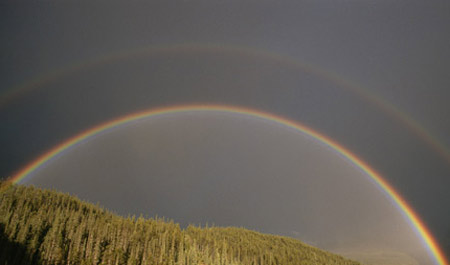
Like the portal to the universe, this double rainbow floats above the Alaska highway in British Columbia, Canada. Double rainbow appears when light is refracted more than once.
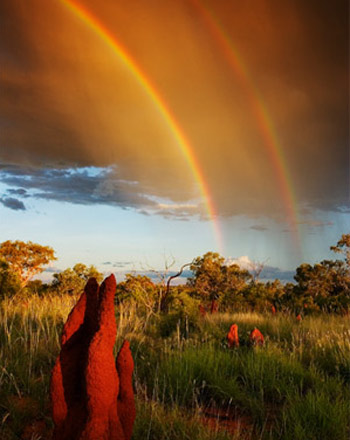
Termites on an Australian grassland stand out thanks to a double rainbow

Rainbow above a frozen lava region of the volcano Ol Doinyo Lengai, Tanzania. Since we look at the rainbow at the same angle, they have a circular arc.

Rainbow appeared after a storm in the sky of Pennsylvania, USA. This is the state that grows many soybeans.

The tundra of Alaska state, America lit up by a rainbow.

Rainbow over the Bay of Foxe of Canada (in the Arctic). Studies of many submarines show that the ice of the Arctic Ocean has decreased by 40% in the past 30 years. The more the ice melts, the easier it is to absorb sunlight, thus accelerating the melting of the ice.
- The enchanting beauty of the rainbow
- Moon rainbow and aurora together appear in Sweden
- Rare rainbow moments appear in the world
- Rare rainbow clouds, beautiful and fanciful
- Strange rainbow twin
- 7 little things to know about rainbows
- Marvel at the beauty of the rainbow-colored river
- Capture a rare, circular rainbow image
- Rare 'rainbow rainbow' in the sky
- 5 consecutive rainbow glows in the sky of America
- The rare upside down rainbow rarely causes 'fever' in Britain
- Video: Record rainbow for nearly 9 hours in Taiwan, China
 The 11 most unique public toilets in the world
The 11 most unique public toilets in the world Explore the ghost town in Namibia
Explore the ghost town in Namibia Rare historical moments are 'colored', giving us a clearer view of the past
Rare historical moments are 'colored', giving us a clearer view of the past The world famous ghost ship
The world famous ghost ship